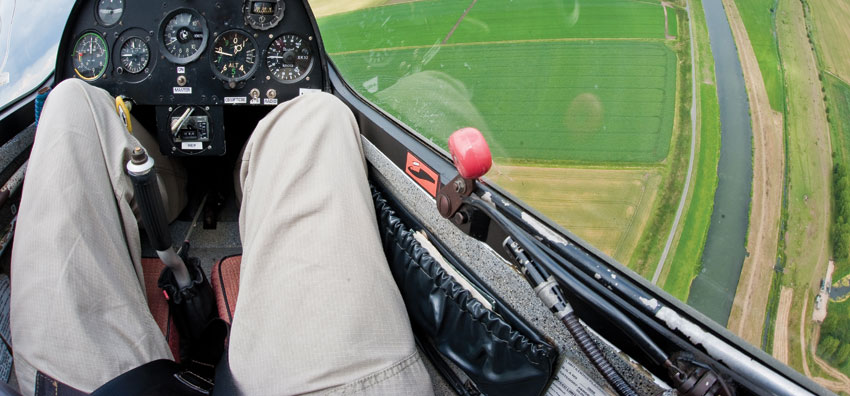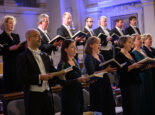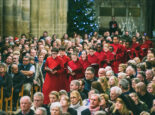The Wind Beneath My Wings
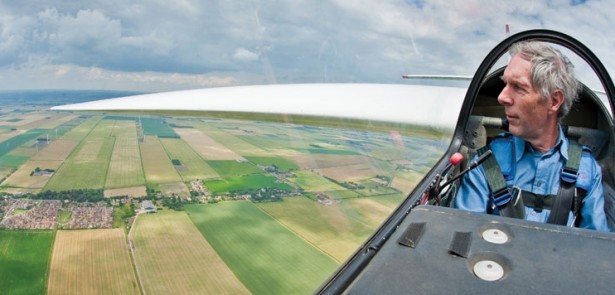
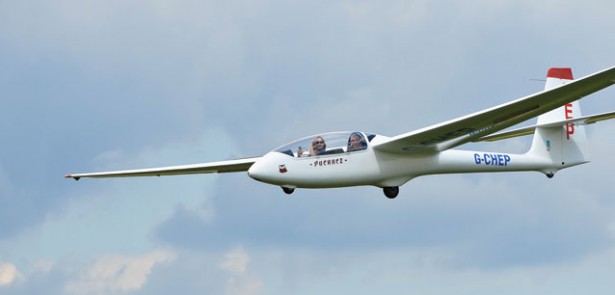
I like engines. Engines are good. Engines give you power. They give you control. They’re even kind enough to get you out of trouble on occasion, whether you’re in a car, on a motorcycle, or in an aeroplane.
The problem I’m facing right now is that my pilot, Paul Davey, has deliberately gotten us into trouble and we don’t have any kind of engine to get us out of it. I had laughed off my friend’s raised eyebrows when I said I was going to fly in a glider with the quip ‘At least I won’t have to worry about engine failure.’
After all, no engine means no stalling, right? Wrong.
I’m sitting in the nose of a Polish-made Puchacz looking straight down towards the earth which is rushing up to meet me at an alarming rate. Seconds ago, we were at 3,000 feet but, if I could only manage to focus on the altimeter I’m sure it would be indicating significantly less than that by now. The plane is spinning wildly round and round, the patchwork quilt of green, brown, and yellow fields below me looking like a malfunctioning kaleidoscope.
The experience of tumbling towards the earth in an out-of-control aeroplane is made even more surreal and dream-like by the lack of noise; there’s no screaming engine note like in the movies, no smoke trailing off the starboard engine (mostly because we don’t have a starboard engine), and no panicked yells from the crew as they struggle to bail out. We’re just spinning and falling in silence. A relaxed and peaceful suicide, a 360 degree 3D widescreen view of my impending doom; the only soundtrack the rush of 115mph wind over the bulbous perspex canopy.
If this was happening during any kind of regular flight it’s fair to say there would be cause for some alarm. Quite understandably, people go to great lengths to avoid being in this scenario. Aeroplanes are meant to fly over the earth, not towards it. Under normal circumstances, when a plane is tumbling out of the sky it’s time to part company with it as, 24 hours later, the pilot of a P-51 Mustang would demonstrate when a display flight at Duxford went wrong.
Before we’d taken off, I’d been shown the drill for releasing the canopy and bailing out. Two red levers, one either side. ‘Release them both’ Davey had said matter-of-factly. ‘But open the cockpit normally (ie, up and over my head to the right) and let the force of the wind do the work.’ What else had he said? Oh yes, release the five-point harness that’s currently holding me in place as we tumble earthwards, and then get the hell out of there and deploy my parachute, hoping that the last person to pack it had been paying very close attention.
My parachute. It had felt so inadequate when I had strapped it on. I had arrived at Crowland airfield on a motorcycle and was wearing a rucksack bigger than the thing that was strapped to my back right now. Clearly there was no reserve chute then. Oh well. At this height, there probably wouldn’t be time to deploy it anyway. Still, at least the instructions to use it had been clear enough. ‘Just pull that’ Davey had said, indicating the D-shaped ring on the left of my chest. ‘But don’t worry – no-one in the club has had to bail out yet.’ Yet. There’s always a first time.
As I’d pulled into the airfield I’d been shocked to see how small the solo gliders were close-up. I was convinced I’d made bigger paper aeroplanes at school. They were no higher than my waist as they sat on the ground. And light? A reasonable sized man could probably pick one up and throw it at a dartboard.
Fortunately, the Polish-made twin-seater Puchacz that I was due to fly in looked significantly more substantial. ‘They call them the Polish killing machines’ Andrew Warren had muttered as we looked it over. They what? And this is Peterborough and Spalding Gliding Club’s marketing guy?
‘They have a reputation for stalling if you don’t keep your air speed up and that makes them go into a stall spin so you tumble out of the sky.’
He was right. Because that’s exactly what we’re doing now. Tumbling out of the bloody sky.
So how on earth can you stall something that doesn’t have an engine? Like most car drivers, I’d always used the word ‘stall’ in conjunction with a poor getaway from the traffic lights when you’re learning to drive. Clutch out too fast, engine dies. Stall. But there is another kind of stall. And that’s when you allow your air speed to drop so low that one of your wings dips and falls downward which in turn flips the opposite wing over and so begins the fatal cycle of spinning and tumbling. It’s an exhilarating experience to say the least, but the only reason I’m able to enjoy it is because my vastly experienced pilot is doing it on purpose ‘Just to see what it’s like.’ Thanks Paul.
For Paul and the other glider pilots at Crowland, the £35,000 Puchacz isn’t a Polish killing machine, it’s a perfectly good aeroplane if you only know how to fly it properly. It’s a bit like blaming a car for killing a driver when it was the driver who fell asleep at the wheel. Other gliding clubs are amazed to hear that the instructors at Crowland (six in total) actually teach pilots how to do stall spins and, more importantly, how to get out of them. ‘We tend to use the Puchacz for training pilots because you can do aerobatics in them so you can learn to do stall spins and the like’ Warren explains. ‘Most modern gliders are designed not to stall or spin so you can’t learn those skills in them.’
After easily correcting the stall spin with a bit of opposite rudder, Paul Davey puts us back on the straight and level and we go in search of the glider pilots’ obsession: thermals. Lovely, life-giving, lift-giving thermals. Thermals are the glider aircraft’s engine; they’re what gain it height and keep it in the air. And they can be incredibly effective. Although we had been towed by a tug plane (a converted Pawnee crop-sprayer) to a height of 4,000 feet today, most gliders are unleashed at just 2,000 feet yet they can climb – in extreme cases, and when the pilot has oxygen – to well over 30,000 feet just by finding the right thermals. That’s the same height that transatlantic jumbo jets fly at!
When it comes to finding thermals, glider pilots never miss a trick. They know that circling under clouds will usually give them a lift, they know that flocks of seagulls whirling round and round have found a thermal uplift and, today, it’s a couple of buzzards vying for airspace with Puchacz that provide the clues. But there are others. ‘I once followed a supermarket plastic bag up over Peterborough for several hundred feet’ Paul laughs. And he’s not kidding.
Lift can also be gained locally from flying over the power station at Spalding and the chimney works down at Whittlesey, but some free rides are to be avoided. In the days when farmers burned stubble in the fields, some hapless pilots found that the heat from the fires provided lift but a few found themselves in serious trouble when their canvas-made gliders caught fire from the sparks!
It is this ceaseless treasure hunt for thermals that differentiates glider pilots from pilots of powered aircraft. The hunt and the challenge of finding hot air makes gliding more of a sport than the A to B nature of normal flying. And on a good day, gliders can stay airborne for hours on end if the pilot can find the right thermals – and has good bladder control! The UK distance record currently stands at 1,000km (600-odd miles) in a single day.
The sporting nature of the thermal hunt is made even more like a game thanks to the Variometer (or Vario for short) that displays any lift that may be found. The dial clearly shows how many hundreds of feet the aircraft is rising by and it becomes totally addictive trying to feed the machine with the lift that sends the dial upwards. Andrew Warren speaks for many glider pilots when he says ‘I have no ambition to start flying a powered aeroplane. I get so excited just finding thermals and watching the Vario dial as you climb 800 feet in a minute – that’s a real thrill.’
Davey finds more hot air and we regain some height to make up for the 500 feet we had lost pulling a loop-the-loop. It was my first, and it was an amazing experience. I had expected it to be a long, slow and graceful arc that would take some time to complete but Davey built our airspeed up to 100 knots (115mph) by pointing the nose down and then flipped the little Puchacz up and over in what seemed like a split second. It’s the ultimate fairground ride buzz; staring at blue sky, then patchwork fields, then blue sky again, all the while pulling three Gs that slam you into your seat and literally take your breath away. It feels like the school playground game of ‘pile on’ when ten of your mates piled on top of you, trapping you under their collective weight and knocking the breath clean out of you. Not that kids these days would dream of doing anything so utterly at odds with health and safety regulations.
The agility of the little aircraft is astounding – another clear advantage of not having to carry the weight of an engine and all the associated heavy metal parts. The Puchacz weighs in at around 363kg (800lb), which is about the same the weight as two motorbikes. Not a lot. And that lack of weight was apparent as soon as the tow rope had tightened and we began our take-off. Within a matter of feet we had left the ground; in fact, we were actually airborne before the tug plane that was pulling us left the ground! The tow, for a first timer, feels decidedly odd. Anyone who’s had their car towed while being sat at the wheel will know the delicate balance required to keep the rope taught without jerking it, but imagine that, after 50 feet or so, your car simply leaves the ground and starts flying. It’s pure Chitty Chitty Bang Bang stuff. But getting an aero-tow is another treat that’s pretty exclusive to glider pilots. Unless you’re in the Red Arrows or any other aerial display team, Civil Aviation laws prevent you from flying in close formation so even pilots of powered aircraft rarely, if ever, get to fly close to another plane. Not so in a glider. With a tow rope that’s just 140 feet long, you’re tucked in close behind the tug plane and it’s a real pleasure to watch another aircraft flying so close and getting the feeling of being in formation. My experience is made even more dramatic when the Beagle Huskey carrying our photographer swoops directly over us. The skies seem filled with planes and I realise this is the closest I will probably ever get to living out my boyhood dreams of being in a dog fight.
At 4,000 feet, Paul pulls on the yellow lever that releases the tow rope and the little Pawnee peels off gracefully and begins its descent. We’re on our own. Powerless, silent, and serene. The strange thing is just how natural it all feels. I have no apprehensions whatsoever. It just feels right. There’s no sense of urgency; we don’t have to go anywhere in particular, we’re not inundated with radio transmissions, it’s just totally peaceful and relaxed and I find myself sitting in silence enjoying the incredible views of Crowland and Spalding from the air. It’s so quiet I can talk easily to Paul who’s sitting behind me but I find myself more often than not just sitting in silence absorbing this unique experience. It’s truly magical. Just me, the little Puchacz, and the wind beneath my wings. Part man, part seagull.
As we come in to land after some 25 minutes of flying, Paul has one last trick up his sleeve. He opens the air brakes to full and throws the Puchacz into a nose dive that a Stuka dive bomber pilot would have been proud of. Remembering how close to the ground the glider had felt as it sat on its tiny wheels before take-off, I expected a very rough landing but was surprised to touch down as smoothly as I’d ever done on a commercial flight. No fuss, no drama. No roar of reverse thrust. In fact, the landing summed up everything that’s great about gliding: it’s flying stripped right back to the bare essentials – flight in its purest form.
Inspired by my experience on the ride home, I whip the clutch in and coast downhill on the A605, the same wind noise buffeting my helmet as it did on the perspex canopy. Sadly there are no thermals to be had at ground level so I’m forced to grab a fistful of throttle before the old dear in the Ford Fiesta catches me up. Yeah, I definitely prefer engines in my motorbikes.
Andrew Warren helps out with marketing duties at the club. He’s also training to be a glider pilot and is close to flying his first solo.
‘It typically takes around 40 or 50 flights before you get your licence. Some do it in less, some take longer, it just depends on your ability. There’s no age limit as long as you have a medical stating that you’re fit to fly. We have club members in their 80s who still fly regularly. I’ve spent about £600 so far and that includes everything from club membership to instruction so that shows that gliding is certainly one of the cheapest ways to learn to fly. I’d say you could get your licence for less than £1,000 in total.
The first step for anyone interested in trying gliding is to log onto our website at www.psgc.co.uk and check out the voucher options. They allow you to buy one trial flight or several flights (see separate story) at various prices. A lot of people come to our open day which is held in July each year, although the dates vary. On that day you can have a trial lesson for just £60. That’s how I got into it last year. We also do Red Letter Days where people from all over the country come to redeem their ‘Gliding Experience’ gift packs. We have quite a few of those days throughout the summer. Or if anyone wants to just come down to the airfield and have a chat we’ll sort out whatever they need to get them flying.
I’d say the hardest things to master are getting used to the aero-tow and landing but the training gliders have dual controls so you always have an instructor ready to take over if you’re having problems. We have instructors at the airfield who can take you all the way from novice right up to getting your licence so our club really is a one-stop shop if you want to learn to fly a glider.’
Reach for the Sky
You can sample gliding at Peterborough and Spalding Gliding Club for as little as £75 (or £60 on the club’s open day in July). The price includes pre-flight briefing, instruction, a tow up to 2,000 feet followed by a 20-30 minute flight, and two months membership of the club. A full day course with three flights costs £180. Other packages are available. The club is open most weekends and bank holidays. Visit www.psgc.co.uk for details and prices.
Peterborough and Spalding Gliding Club
Crowland Airfield, St Guthlac’s Lodge, Postland Road, Crowland, PE6 0JW
Tel: 01733-210463 Web: www.psgc.co.uk Email:



